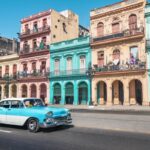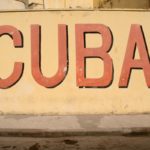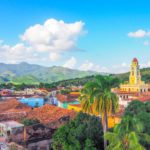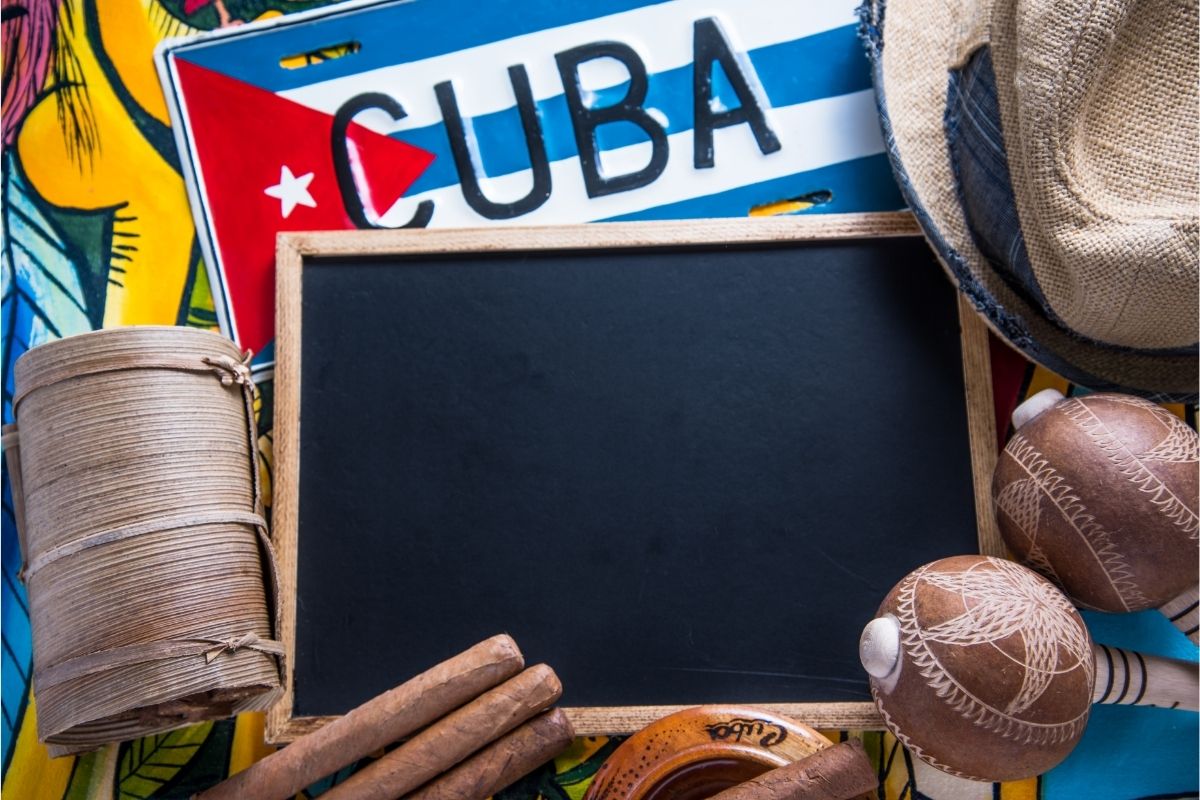Amongst the stunning beaches and colorful cities on the coast, Cuba is host to an impressive amount of mountains. In fact, it has over 800 named peaks.
Nestled on the Southern side of the island, Cuba is home to three main mountain ranges.
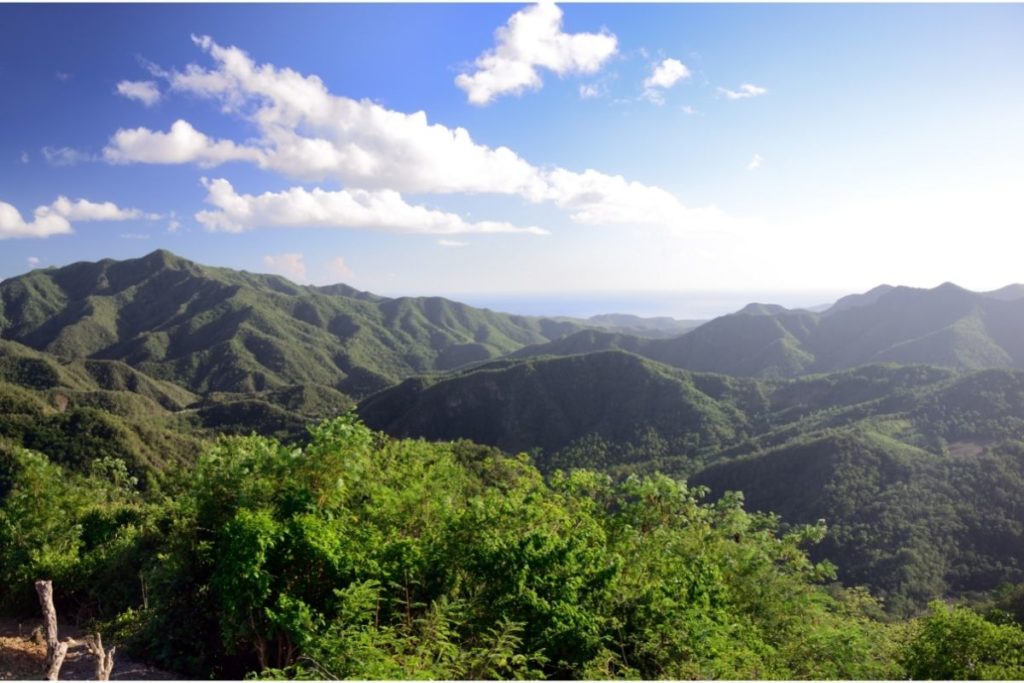
Cuba’s coastal areas are in fact mostly mountainous, with a mix of flat plains and hilly landscapes that stretch for almost two-thirds of the island.
Geography Of Cuba
The Republic of Cuba is found in the very north of the Caribbean Sea at the juncture where it crosses with the Atlantic Ocean and the Gulf of Mexico.
As the largest island in the Caribbean sea, it has a land mass of 42,426 square miles.
As an island, it does not border any countries physically but borders the territories of Haiti, the Bahamas, the US, Mexico, and Jamaica.
The island has 15 different provinces and one special municipality. The geography of Cuba can be divided also into three main regions- West, Central, and Eastern Cuba.
Western Cuba, Central Cuba, And Eastern Cuba
Western Cuba is the main bulk of the island and is an incredibly popular place to visit. It is closest to the vibrant capital of Havana and the Western region is home to vibrant culture, amazing beaches, and densely lush valleys to explore. It is home to the Sierra del Rosario biosphere reserve.
Central Cuba has a rich cultural history that is as diverse as the scenery it encompasses. Teeming with mountain ranges, flat plains, and the El Nicho waterfalls.
With a number of world heritage sights and the Sierra del Escambray mountains within, Centra Cuba is ripe for exploration and enjoyment.
Eastern Cuba is the less touristy region of Cuba, though it is also known as the adventure capital of Cuba due to its tall mountainous regions and fantastic beaches that span the long coastline.
Eastern Cuba is home to the highest peak in Cuba, Pico Turquino. There is also an abundance of parks within Eastern Cuba including the UNESCO world-historic sight Turquino National Park amongst many others! You can find pretty much everything here from pine forests to secluded beach spots.
Mountains In Cuba
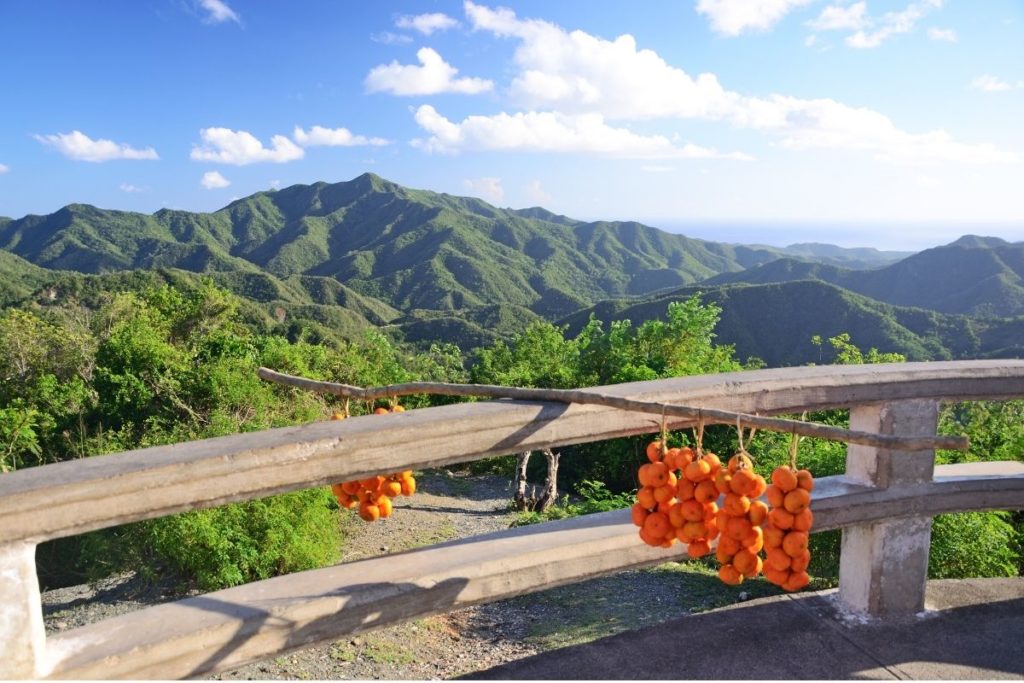
Within Cuba, there are a number of mountain ranges, including the Sierra Maestra, the Sierra del Rosario, and the Sierra del Escambray.
Below we’ll go into a bit more detail about the different ranges and the largest mountains within them.
Sierra Maestra
Situated between the Granma Province and Santiago de Cuba this mountain range runs across the Southeastern part of Cuba, starting at the coast.
In terms of history, the Sierra Maestra mountain range has been a place of guerilla warfare against ruling parties from as early as the 1500s.
Many escaped slaves and resistance fighters have used the hills to escape and fight out in various major and minor conflicts, all the way up to the guerilla fighting against Fulgencio Batista, where Castro led forces from Sierra Maestra for over two years.
The highest point on the island is within the Sierra Maestra. That is the Pico Turquino which has a peak of 6, 476 feet above sea level. And as it comes directly from the coast, it is one hell of a tough climb.
Pico Turquino – This sheer and brutal mountain is named after the beautiful turquoise views that come with climbing this mountain. Looking out over the crystalline seas, you’ll instantly understand why it has that name.
If you do climb it, make a point to be prepared as it’s a lot tougher than it seems! The mountain itself is actually a part of the Turquino National Park.
This national park is a protected area in Cuba, both for environmental and historical reasons. As mentioned before, guerrilla warfare is a huge part of Cuban history and as such, so does the Sierra Maestro range.
There is actually a bust of Jose Marti at the summit, a Cuban nationalist hero for his involvement in liberating Cuba from the Spanish.
Gran Piedra – The second highest peak in Cuba, and also a part of the Sierra Maestra range. It is actually a monolith, and one of the largest on the planet standing 4098 feet above sea level.
It is located within the Baconao National Park and is surrounded by verdant rainforest.
Sierra Del Rosario
Housed in western Cuba, Sierra del Rosario is near the city of La Palma and is established as a biosphere that is protected as a UNESCO heritage site and a managed resource.
Within these forests lie over 800 different protected plants, of which 35 percent are endemic. It is also host to many unique animals such as the Bee hummingbird and the Yellow Striped Pygmy Sleuth.
Sierra Del Escambray
These mountains are situated in the central region of Cuba. Covering three provinces, the Escambray mountains extend 50 miles in each direction.
The third highest mountain in Cuba can be found in the Escambray mountain range. It is called Pico San Juan. The range itself is home to the Agabama river, which divides the range into two, also known as the Guamuhaya Mountains and the Sierra de Sancti Spiritus.
At the foot of the southeastern side of the mountains, lies the Valley de Los Ingenios- a UNESCO world heritage site that protects the waterfalls, caves, and canyons. An amazing place to visit if you get the opportunity!
Pico San Juan – This mountain is also known as Cuca, and can be found in the Cienfuegos province. With a peak of 3 740 feet above sea level, it houses a meteorological radar atop it.
There is much farming of coffee, livestock lands, and forestry surrounding the mountain which has unfortunately led to many of the species living within the verdant jungles on its slopes becoming threatened.
The slopes themselves are covered in a tropical forest that houses a huge amount of species.
Why Are The Mountains In Cuba Important?
The mountains in Cuba are essential tourist attractions, especially for those who want to explore the wilderness of the trails and the amazing wildlife that can be found there.
They are also essential to the verdant and interesting species that call it home, and one benefit of Cuba’s troubled history is that much of this land has been preserved as it is important to the foundations of Cuban guerrilla warfare and the part it has played throughout its struggles.
However, there is always constant encroachment from farming, mining, and other economic activities that threaten the many endangered and unique species that call the mountains home.
The mountains are also an important source of mineral deposits which are the main trading resource for Cuba.
Final Thoughts
Does Cuba have mountains? Yes, it certainly does. These mountains cover a large area of the island and have played an important role in the shaping of the country.
Not just geographically, but historically as well. They are certainly worth exploring, especially if you want to get some glimpses of some of the most fantastic views out to the Caribbean seas and the surrounding island from the mountains’ peaks.
- What Is The Largest Island In Cuba? - September 19, 2022
- Havana – Why Is It Cuba’s Most Exciting City? - September 19, 2022
- Cheapest Time To Visit Cuba (Ultimate Guide) - September 19, 2022



